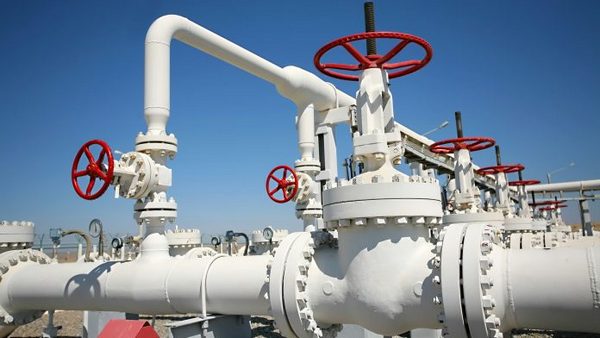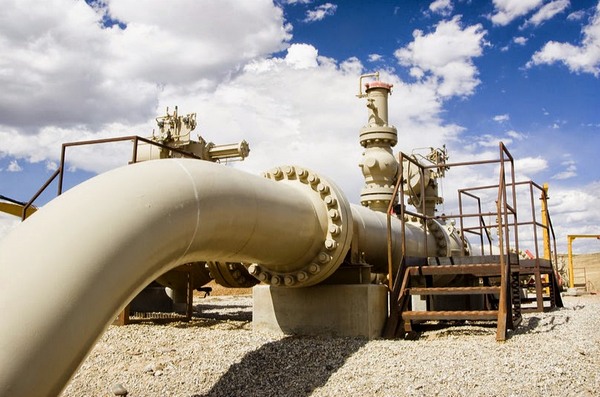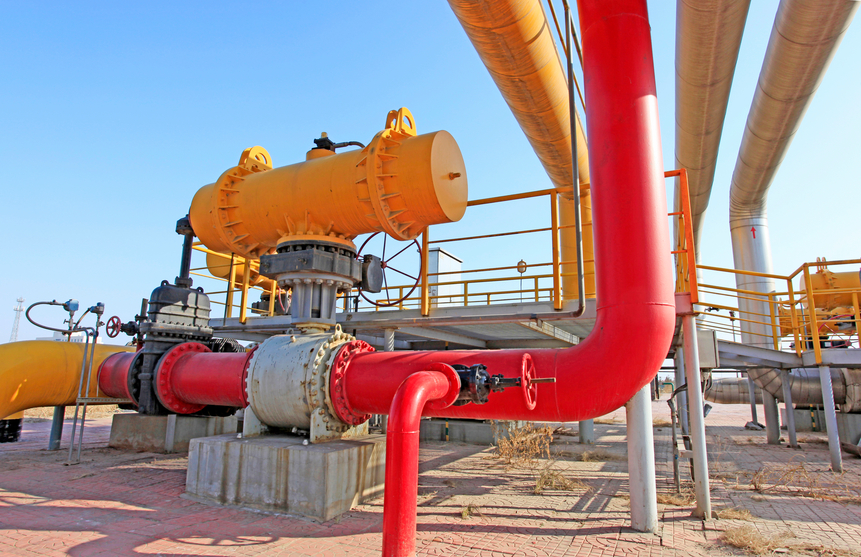Various types of valves are required for successful and safe pipeline operation. They help in pipeline maintenance and also during emergency.
INDEX
- Pipeline Sectionalising Valve
- Pipeline Block Valves
- Pipeline Block Valves Actuation
- Pipeline Emergency Shutdown Valve
Pipeline Sectionalising Valve
Pipeline block valves should be used to limit the release of line contents in case of leaks or pipeline ruptures outside plant boundaries : These valves are called “sectionalising block valves”.
Sectionalizing Valve (SV) are installed at regular intervals (around 25 to 40 Kms.) to isolate pipeline section during emergencies like leakage in pipeline as per statutory requirements. An SV station is installed at such locations having a unmanned control room with a guard room and boundary wall.

A lockable grill cage is provided over the Sectionalizing Valve installation including piping and instrumentation to prevent tampering by unauthorized persons and ensuring safety of pipeline operations.
- Onshore : Not withstanding the ANSI/ASME requirements (Article 434.15.2/846.11) the spacing of sectionalising block valves should consider limiting the pipeline liquid contents between adjacent valves.
- Offshore : There is no requirement for sectionalising block valves in offshore pipelines.
[google-square-ad]
Pipeline Block Valves
Two types of block valves are used in Pipelines.
- Sectionalising Valves
- Emergency Shutdown Valves.
It may not always be possible to achieve complete leak tight isolation, but flow should in any case be severely limited so that the main objective is achieved, i.e. the fluid within the isolated sections is contained.

Valves which are necessary for the routine operation of the pipeline, such as pig trap valves, are not considered as block valves.
The use of fittings between block valves, such as flanges and instrument taps, should be minimised.
In some situations, e.g. at the downstream side of plants or major river crossings, a check valve may be used instead of a block valve, since it is simple, reliable and self-actuating. The valve will normally need to be piggable, either by using a piggable flapper or by allowing the flapper to be temporarily secured in the open position.
Check valves shall not be used to provide isolation for maintenance of equipment.
Pipeline Block Valves Actuation
- Three methods of operating block valves can be considered: locally, remotely and automatically.
- The appropriate method shall be determined from a study of the likely effects of a leak and acceptable released volumes, based on the total time in which a leak can be detected, located and isolated.
- The closure time of the valves shall not create unacceptably high surge pressures.
- Automatic valves can be activated by detection of low pressure, increased flow, rate of loss of pressure or a combination of these, or a signal from a leak detection system.
- Low pressure detection shall not be used if the control system is designed to maintain the pipeline pressure.
- Automatic valves shall be fail-safe.
- Onshore : For pipelines transporting toxic category B fluids and category C and D fluids, the installation of remotely operated sectionalising block valve is recommended to further reduce the extent of a leak.
- The emergency shutdown valves should be automatically actuated when an emergency shutdown condition occurs at the plant or facility.
- Offshore : The emergency shutdown valves should be automatically actuated when an emergency shutdown condition occurs on the platform.
[google-square-ad]
Pipeline Emergency Shutdown Valve
For any incident within the plant boundaries, the pipeline inventory needs to be isolated from the plant, in order to prevent escalation of the incident. These valves are called “emergency shutdown valves”, and form part of the pipeline.

- ESD in Onshore : ESD valves should be located at each end of the pipeline, and on the incoming and outgoing sections at any plant en route, such as compressor or pumping stations. The valves should be located in the non-hazardous area e,g, close to the plant fences.
- ESD in Offshore : An ESD valve shall be located at the top of each riser connected to the offshore platform. It should be placed below the platform lower deck level for protection against topside incidents.
- For pipelines connected to manned offshore complexes, and in addition to the top of riser ESD valve, a subsea ESD valve located on seabed close to the platform may be considered. Subsea valves should be justified by a quantitative risk assessment.
- The distance of the subsea ESD valve from the platform should be derived such that the combined risk associated with the platform activities and the pipeline fluid inventory between the valve and the platform is minimised.
ESD valves should not incorporate bypass arrangements. Pressure balancing, if required prior to valve opening, should be done using the operational valves located immediately upstream or downstream of the ESD valve.
